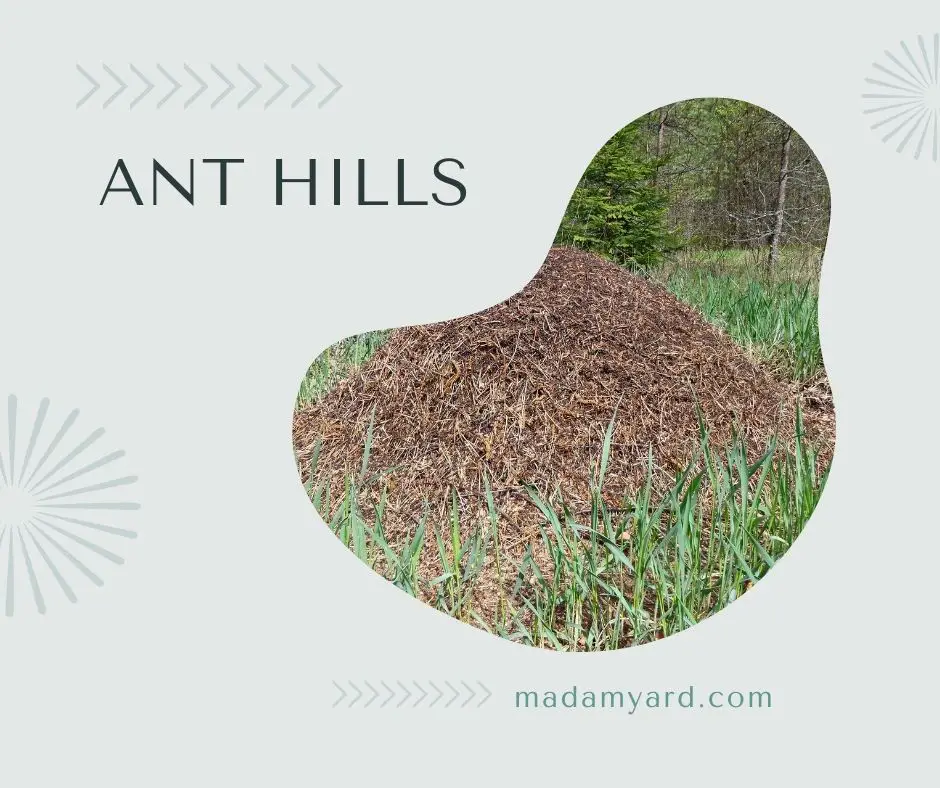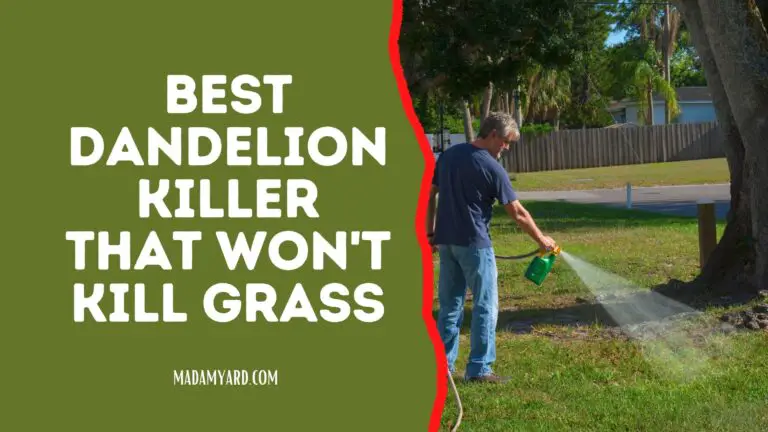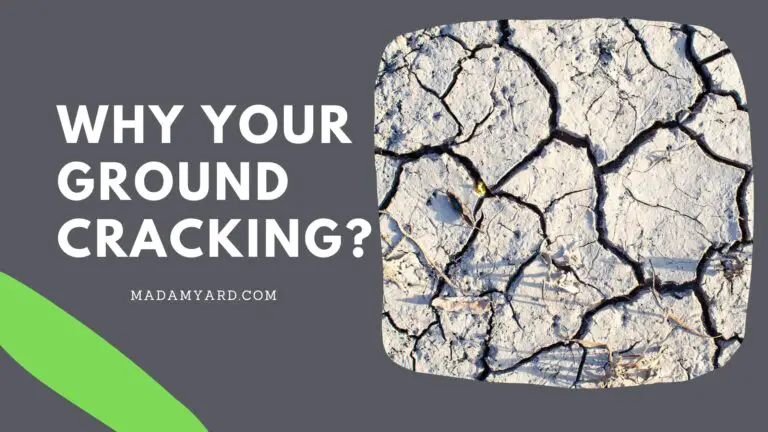Why Are There So Many Ant Hills In My Yard? (How To Get Rid Of Ant Hills?)
Are you wondering why there are so many ant hills in my yard? Or why are there lots of ants in my yard? Ants are often harmless pests since all they do is try to feed their colony. They’re not as terrible as wasps, for instance. They do, however, tend to sting, which can be painful.
A single sting might hurt and itch, but if you disrupt an ant colony by accident, you’re in for a world of misery. Ant stings may be painful, and they can also cause allergic responses like rashes and anaphylactic shock. If you’ve come this far, there’s a good chance you’ve already encountered some ants.
Ants do have a habit of infesting residential premises. During swarming seasons, this is especially true. We have a lot of material here to assist you better understanding ants and finding out how to cope with ants in the yard infestation.
My yard is full of ants. I’ve been there, I’ve been stung, and I don’t want those ants to start infiltrating my home — can you imagine the misery of dealing with hundreds or even thousands of these small creatures?
Even while ants do not constitute a significant hazard, they can cause specific health issues as well as cosmetic harm. Unfortunately, having an ant infestation in your yard or lawn will not help you preserve the health of your turfgrass.
Let’s get started now, without further ado!
What Is Ant Hills?

What is an anthill, exactly? The anthill is made up of the mound of earth that may be observed in your yard or garden. Dirt, small rocks, sand, clay, and various forms of decomposing organic components will all be found in an anthill.
Anthill or ant dirt piles are the outcome of the queen and worker ants attempting to create a haven for the entire colony. The mound exists because ants take buried soil back out into the entrance.
They dig ceaselessly, bringing subsurface soil with them, resulting in the nest’s dome-like structure. To accommodate the ever-increasing populations of ants, worker ants continue to dig tunnels beneath the mounds.
Why Are There So Many Ants Hills In My Yard?
Like other living things, ants have a few fundamental needs to survive. When ants are looking for a place to establish a nest, they look for things like food and water and the ability to procreate. If your house offers everything they need, anthills will quickly appear in your yard to let you know.
These dirt mounds come in a wide range of sizes and are a solid sign that you have an ant infestation. The mounds are just granulated earth brought to the surface after the nest has been excavated out below ground. These anthills may grow to be quite big if left unmanaged. On the other hand, Anthills require a steady, ideal environment to thrive.
Ants will notice leaking pipes, poorly drained locations such as puddles or birdbaths, or any other consistent, reliable water source and leave a smell to attract more ants to it. As a consequence, a large number of ants will visit your property to examine what it has to offer.
Trash bags, spilled food, and even debris in the yard may provide food sources, and it might be anything as basic as abandoned food on the ground or a table outside.
How many times have you witnessed a swarm of ants swarming over a sliver of food on the sidewalk? To feed a whole colony of ants, you don’t need much.
Ants will scout the location for a nest and begin excavating as long as they have everything they need to survive. Ant nests are complicated and buried deep below.
They frequently have many entrances and exits, with tunnels connecting them. All of the anthills in your yard may theoretically be related and the result of the same ant colony.
Rake Out The Ant Hills
The best technique to avoid any physical indications is to rake out the ant hills as soon as it appears. If you don’t mind the ants, this method is good for preventing the hills from growing too huge and hardening over time.
If you mow regularly, there’s a strong chance you’re breaking up the hills. Aside from that, you should remove any shelter that may be causing the ants in your yard to feel at peace.
What Causes Ant Hills In Your Yard?
You might not believe what I’m about to tell you: there are over 12,000 kinds of ants on the planet today. When you consider how unusual it is to witness just a few ants, this sounds absurd. Hundreds of thousands of people can live in a colony.
And can you imagine how many ants there are when that’s the case? There must be millions, billions, or trillions of these six-legged critters on the planet right now. Without question, they outweigh us, humans, in terms of numbers.
As a result, it’s no wonder that ants may be found almost anywhere. Yes, your lawn and yard are included in this. We need to take a brief look at ants and their behavior to figure out why there are so many ant mounds in my garden.
Ants like to build their colony nests in sandy, dry soil in some circumstances and areas. On the other hand, Ants prefer to make their nests in damp or decomposing wood.
Another thing that ants prefer is our patchy, sometimes struggling lawns. As a result, if your grass or yard is healthy and flourishing, you should expect to see significantly fewer ants.
How Do I Get Rid Of Ant Nests In The Grass?
A large ant mound in your yard is obnoxious and unattractive, and it indicates your yard infest with hundreds of millions of ants. It would be tough to eliminate all of these ants at once without killing lawn ants if they invaded your home.
1. Natural Techniques
Natural treatments don’t develop superbugs and are significantly less damaging to the environment, but they take a little longer to work.
Baking Soda
Baking soda, when combined with bait, can cause a slow death. This common kitchen chemical causes the ant’s digestive tract to produce gas that it cannot release, causing it to float and starve to death.


Borax
Borax is a boron-containing natural mineral used in ant baits both indoors and out. However, ants will avoid it if you use too much in a dry or wet bait combination, and it works similarly to baking soda.
Boric Acid
A contact killer, boric acid is a cousin of borax, and it comes in liquid or powder form and may be used in a solution or on its own. Using that entrance, put the powder immediately on and around an ant mound to kill any ants.
Tonic Water
Pour some tonic water over the mound and let it soak in. Not only will some ants sink, but the carbon in the galleries will deplete oxygen, causing the ants to suffocate.
Diatomaceous Earth (DE)
Sprinkle DE on top of the mounds and around them. While it won’t kill the queen, it can drastically reduce the population of a colony over time. However, you’ll have to reapply every few days and when it rains.
Bait Stations Made At Home
Borax, baking soda, or other ant killers mixed with sugar or peanut butter and placed along ant trails is a fantastic way to destroy an entire colony since the workers will bring the bait home and offer it to the queen.
Soap
Borax isn’t the only poisonous home cleaning. Mix some dawn or insecticidal soap with water and saturate the colony. The ants will drown since the soap makes it harder to escape.
Bleach and other strong cleansers should be avoided since they pollute the soil. You should also avoid using vinegar since it works as a repellant and will only cause the ants to wander for a few days before returning.
Water
A simple and free way is to boil water, which kills ants instantaneously on contact. However, because the heat may damage grass and plants, you should only use it in road gaps or sidewalks.
It’s also doubtful that you’ll destroy the entire colony because the water will begin to cool as soon as it comes into touch with the soil.
2. Chemical Method
The most often used insecticides in easily accessible off-the-shelf products are listed below:
Pesticides Containing Pyrethroids
In chrysanthemum blooms, these are organic chemical compounds. They poison insects, but people and animals are only mildly harmed.
It’s a neurotoxin that paralyzes insects by attacking their sodium channels. This pesticide class is the most widely used active ingredient in treatments for hardier ant species like carpenter ants.
They’re usually in the form of gel or granular baits since that’s the most efficient approach to kill the colony.
Borax Based Ant Killers
Borax and boric acid have long been used as cleaning agents and cutting agents in many home items.
They’re also effective against ants and are the basis for many insecticides. Borax, a naturally occurring chemical molecule, is very poisonous to bugs, plants, and fungus.
It comes in powder form, blended with various ant attractant additions, and effectively against many ant species. It disguises it as a food source, encouraging ants to consume it.
Ant Killer Spray
It is typically used early when you first discover the ants and wish to get rid of them.
Even though it is not designed to be used directly on grass, the ant killer spray is quite effective at quickly removing ants in and around the house. This should only be used in and around your house.
Organophosphates
These insecticides are phosphoric acid-based compounds, and they will cause paralysis and death by disrupting the central nervous system.
They were once widely employed as an insecticide for agricultural and private purposes, but their use was recently banned due to their toxicity.
Some, like acephate, a popular option against invasive imported fire ants, are still used in safe retail goods.
It is efficient and easy to apply in powdered and water-soluble form, which is why it is utilized in many fire ant solutions for lawn treatments and ant mound elimination.
Ant Killer Granules
Granulated and killers are available, and these work in the same way as slow-release poison bait stations do.
Ants will return to the anthill with the granules and distribute the poison to more ants. If you choose granules, though, you may scatter them across your land.
It is useful when you can’t seem to find the anthill. Granules, on the other hand, should be handled with caution. They might be dangerous to dogs and children, and they’re easy to pick up by people who aren’t ants.
Conclusion
To begin with, the anthills appear because a steady food source is close. In addition, the ants in that nest have discovered a supply of water.
When both of these objects are close to a certain spot in your yard, the ants will build a nest underneath it and an anthill above it.
The number of anthills and nests should be reduced by removing their food and water sources. Aside from that, you should remove any shelter that may be causing the ants in your yard to feel at peace.
The ants will pack their belongings and relocate before you know it!








Reading what you had to say about why ants can end up flocking to your home was a big help. This is something that we really feel we needed some way to solve since we’ve been seeing more and more hills around this place lately and they don’t seem to be going away. I’ll ask a pest control expert to stop by and get us some help first before we try and solve whatever pipe or landscaping issue is causing this.